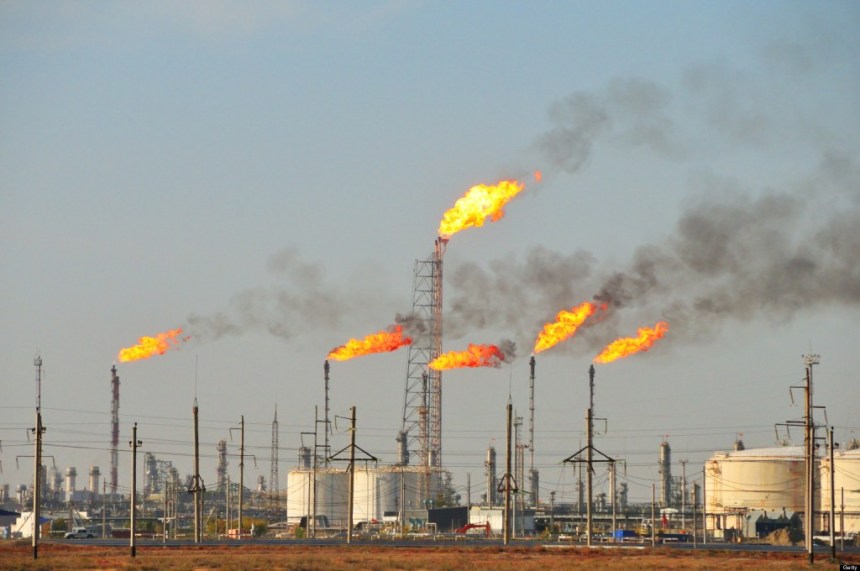
Onome Amuge
Global oil prices dipped on Thursday, reversing earlier gains, as the prospect of a high-stakes diplomatic summit between U.S. President Donald Trump and Russian President Vladimir Putin sparked hopes for a breakthrough in the ongoing war in Ukraine. The anticipated meeting between the leaders of the world’s two largest oil producers has sent a strong signal to the markets that a geopolitical risk premium, which has supported prices for months, may be starting to deflate.
The benchmark Brent crude futures fell by six cents to settle at $66.83 a barrel, while U.S. West Texas Intermediate (WTI) crude declined by four cents to $64.31. This latest downturn extends a bearish trend that saw both benchmarks slide one per cent on Wednesday, touching their lowest levels in eight weeks. The combined geopolitical and fundamental headwinds have led to a significant correction, with oil prices tumbling by around nine per cent over the past week alone, marking six consecutive sessions of declines.
Kremlin aide Yuri Ushakov confirmed on Thursday that a meeting between the two leaders was imminent, characterising it as the first such summit since 2021. The announcement followed previous statements from a White House official that a meeting could take place as early as next week. The mere possibility of a diplomatic resolution has proven powerful enough to override some of the market’s more bullish supply-side factors. An end to the conflict in Ukraine would likely alleviate concerns over European energy security and potentially pave the way for a more stable global energy landscape, even if the road to peace remains fraught with complications.
However, the diplomatic signalling from the Kremlin and the White House is not without its contradictions. Even as the leaders prepare to meet, the U.S. government is continuing with preparations to impose new secondary sanctions on major buyers of Russian energy products. This hawkish approach is a clear attempt to maintain economic pressure on Moscow to halt the war.
Adding to the complexity, President Trump has taken a direct and punitive stance against countries he accuses of fuelling the conflict. On Wednesday, he announced an additional 25 per cent tariff on Indian goods, citing the country’s continued imports of Russian oil. The new import tax is slated to take effect on August 28. India, which is the second-biggest buyer of Russian oil after China, has been a key target of U.S. pressure. Furthermore, Trump indicated that he could announce similar tariffs on China, the world’s largest importer of Russian crude. These unilateral actions introduce significant new variables into the global trade and energy matrices, raising concerns about potential retaliatory measures and their broader impact on economic growth and oil demand.
The bearish sentiment is also being reinforced by fundamental market dynamics, particularly on the supply side. The Organization of the Petroleum Exporting Countries and its allies, a group known as OPEC+, agreed on Sunday to raise oil production by 547,000 barrels per day for September. This decision to increase output comes at a time when traders are already cautious.
Analysts at energy advisory firm Ritterbusch and Associates highlighted this supply growth as a major headwind, stating in a note that additional increases in OPEC production remain as the overriding negative consideration while continued tariff uncertainties are still providing the main argument favoring lower price levels.
Despite the pervasive selling pressure, the market found some support from a handful of bullish signals. UBS analyst Giovanni Staunovo noted that the day’s selling was limited by several factors. Chief among these was a larger-than-expected drawdown in U.S. crude stockpiles. The Energy Information Administration reported on Wednesday that U.S. crude oil inventories fell by 3 million barrels in the week ended August 1, a much more significant decline than the 591,000-barrel reduction anticipated in a Reuters poll of analysts.
Furthermore, signs of strong demand from Asia, the world’s most important growth engine for oil consumption, also helped to temper the market’s descent. China, a key market driver, saw its crude oil imports in July fall by 5.4 per cent from the previous month. However, a more telling indicator of long-term health was the year-on-year figure, which showed imports were still up by 11.5 per cent. Analysts expect refining activity in the region to remain firm in the near term, noting that demand is not in any immediate danger of collapsing. This positive demand picture was further corroborated by Saudi Arabia, the world’s largest oil exporter, which on Wednesday raised its September crude oil prices for Asian buyers for the second consecutive month, a move that signals tight supply and strong demand in the region.









